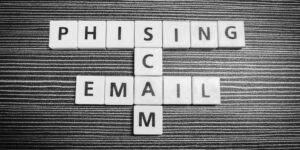How to not get caught in a phishing scam. I’m sure that you’ve seen phishing scams in the news. “Yada-yada email company loses 1,000,000 passwords” or “the new email virus you need to watch out for!” There’s so many phishing and scam attempts out there, that you get overwhelmed and figure it’s only a matter of time before your email gets hacked or you click on a virus link. There are ways to prevent this, however, and here’s a few tips on how to not get caught in a phishing scam.
Table of Contents
First off, what is phishing?
According to the University of Indiana, “Phishing scams are typically fraudulent email messages appearing to come from legitimate enterprises (e.g., your university, your Internet service provider, your bank). These messages usually direct you to a spoofed website or otherwise get you to divulge private information (e.g., passphrase, credit card, or other account updates). The perpetrators then use this private information to commit identity theft.”

How to Not Get Caught in a Phishing Scam
Now your common “Nigerian prince needing money sent to him” may be somewhat of a joke, but there are some very well done phishing attempts, and they can be anything from a convincing email, to your friend’s phone being hacked and a fraudulent text message being sent to you.
There’s no need to be paranoid, though. Not every link you click on is a virus, obviously. It’s just a matter of being vigilant and making sure you know who or what sent you a link before you click on it. Change your passwords regularly, and use different combinations of numerals, upper and lowercase letters. And for the love of everything, don’t use “password” or “12345678” as your passwords. Be more creative than that.

Another way to not get caught in a phishing scam is to read an email in plain text. Phishers are smart, and will conceal virus links inside clickable images. You can hover over an image to see the URL of it, and use commons sense to determine if it looks like a link you should click on.
Lastly, one of the best ways to prevent being caught by a phishing scam is to have good antivirus software. Norton, Kapersky, and Avast are a few of the big ones, and they often have discounted deals for students. These can be good for you phone as well, as they will help find fraudulent text links, as well as emails.
So be smart, be safe, and use common sense. Phishing scams can be a nuisance, but if you use these tips, you can prevent falling victim to an attack and browse the web safely.
Read more – How to Avoid Stimulus Check Scams








